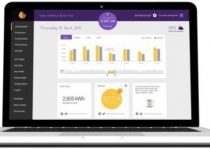Solar, Storage and Distributed Energy News
Lord Howe Island to get solar and storage microgrid, but no wind turbines

Lord Howe Island’s long and rather fraught journey to a renewable power supply is back on track, with a new funding package from the Australian Renewable Energy Agency – this time for solar and storage without the wind turbines.
The remote New South Wales island will install a minimum 1.2MW of solar and a 3.2MWh battery system, according to a statement from ARENA on Thursday, with the help of $4.5 million in funding from the federal government agency, and a loan facility of $5.9 million from the NSW government.
ARENA said the project’s development was set to commence “soon,” with Photon Energy Engineering Australia awarded the tender by the (much relieved) Lord Howe Island Board.
The ARENA funding for the $11.1 million project comes more than five years after a first offer of $4.5 million was extended by the Agency, back in July of 2014 – at that time for a combination of 450kW of solar, 550kW of wind (two turbines), and battery storage.
But the LHIB’s efforts to wean the Tasman Sea island from its costly and polluting diesel fuel power supply hit a wall in 2017, when then energy minister Josh Frydneberg intervened to rule out the two wind turbines.
Frydenberg had argued that the two wind turbines would have an “unnacceptable” impact on the Island’s World and National Heritage values, and particularly on its ‘visual landscape’.
But the decision was controversial in light of the anti-wind stance the federal Coalition had increasingly been taking – and looked even more so when a recent Guardian Freedom of Information request revealed Frydenberg had overruled his own department in making the call.
Frydenberg’s intervention also flew in the face of economics, at the time. A study conducted by consulting group Jacobs had found that a combination of solar, battery and wind was going to achieve a 70 per cent reduction in the island’s diesel generation, while a solar and battery only system would cut diesel by just 35 per cent.
In its statement this week, however, ARENA said that “further feasibility studies” had identified that a solar PV and battery storage microgrid would provide roughly the same benefits – or more than two-thirds of the island’s electricity supply.
“Lord Howe Island faces a unique set of challenges in supplying and recovering the costs of providing essential services to its community and in protecting Lord Howe Island’s natural environment,” said ARENA CEO Darren Miller.
“We are excited to see a renewable solution will be adopted that will significantly improve the sustainability of the power supply, improve energy security and reduce the impact of future fuel cost increases.
“Knowledge gained from this project will be shared for the benefit of other isolated and remote communities,” Miller said.
NSW energy minister Matt Kean said the environmental benefits of the project were both local and national, with every litre of diesel needing to be shipped to the island.
“The completed project will provide an economic boost to the local economy and to the outstanding environmental credentials of this World Heritage listed island paradise,” he said.
LHIB CEO Peter Adams stated described the new funding from ARENA as “a fantastic result for the Lord Howe Island community.”
“We set a target to reduce our diesel use by two-thirds, and we believe we will not only meet that target, but potentially exceed it.
“To achieve this result without detracting from the World Heritage values of Lord Howe Island is a result that everyone should celebrate.”

Sophie is editor of One Step Off The Grid and deputy editor of its sister site, Renew Economy. Sophie has been writing about clean energy for more than a decade.



2 Comments